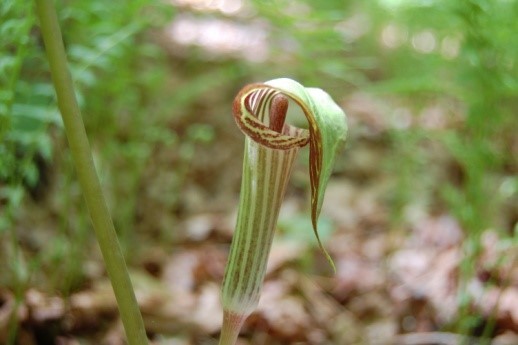Hunting and Trapping Newsletter
The New York State Department of Environmental Conservation sent this bulletin on 06/05/2019 11:12 AM EDT |
| DEC Delivers - Information to keep you connected and informed from the NYS Department of Environmental Conservation |
| Share or view as a web page || Update preferences or unsubscribe |
Hunting and Trapping Newsletter |
New York Youth Wins the 2019 National Junior Duck Stamp Art Contest
Nicole Jeon, a 16 year-old from Scarsdale, New York, took top honors in the 2019 National Junior Duck Stamp Contest. Her acrylic painting of a harlequin duck bested superb "Best of Show" art from all 50 states, Washington, D.C., Puerto Rico and the U.S. Virgin Islands. Jeon's painting will be made into the 2019-2020 Junior Duck Stamp, which sells for $5 and supports conservation education. For more information, visit the U.S. Fish and Wildlife Service’s Migratory Bird Program website. Turkey Hunting Success from Field to ForkThe 2019 Spring Wild Turkey Season closed on May 31st. This spring, hunters had success in the 56 counties open to spring turkey hunting. About 90,000 hunters take to the field each spring in pursuit of a wary gobbler, and on average, about 20 percent of hunters are successful. This results in thousands of pounds of nutritious game meat for hunters, their families and friends.
DEC partnered with Cornell University Cooperative Extension and researchers from Texas Tech to analyze the nutritional content of hunter-harvested wild turkeys in New York. The analysis concluded that fat and sodium were substantially lower in wild turkeys when compared to domestic turkeys. Protein, iron, and zinc were higher in wild turkey while cholesterol and magnesium were lower, compared to the domestic raw and cooked counterparts. This information will enable consumers, researchers, and Cooperative Extension specialists to make informed decisions about nutritional benefits of wild turkey meat. Further, these data help build a dataset about the nutritional value of wild-caught game meat - a local, sustainable source of high-quality protein. For more information about the benefits of wild game meat, visit Cornell University Cooperative Extension’s Wild Harvest Table. Looking for a new recipe that your friends and family will gobble up? Try Wild Turkey Vietnamese-style Spring Rolls! Assessing Vegetation Impacts from Deer
DEC has partnered with Cornell University to provide a way for forest owners and people concerned about forest health to assess and monitor the ecological impacts of deer. It involves marking some plants and measuring their height at the same time each year. The method is called AVID, which stands for Assessing Vegetation Impacts from Deer, and the AVID website provides all the information you need to get started monitoring. For people who would like some hands-on training in using AVID, Cornell Cooperative Extension offers half-day workshops. Visit the AVID website to find a workshop near you. |



 This year’s rainy weather has provided plenty of water for spring wildflowers, but even so, forest favorites like trillium and jack-in-the-pulpit can be hard to find. One reason these plants are much less common than they used to be in many areas is that they are being eaten by deer. Deer populations in parts of the state are high enough to harm their habitat and the forest ecosystem. The lack of wildflowers may be one of the most obvious signs, but the entire forest can be threatened if deer browsing prevents tree seedlings from growing up to replace trees that fall. Heavy browsing of shrubs and ground cover also destroys habitat for birds and other wildlife.
This year’s rainy weather has provided plenty of water for spring wildflowers, but even so, forest favorites like trillium and jack-in-the-pulpit can be hard to find. One reason these plants are much less common than they used to be in many areas is that they are being eaten by deer. Deer populations in parts of the state are high enough to harm their habitat and the forest ecosystem. The lack of wildflowers may be one of the most obvious signs, but the entire forest can be threatened if deer browsing prevents tree seedlings from growing up to replace trees that fall. Heavy browsing of shrubs and ground cover also destroys habitat for birds and other wildlife.